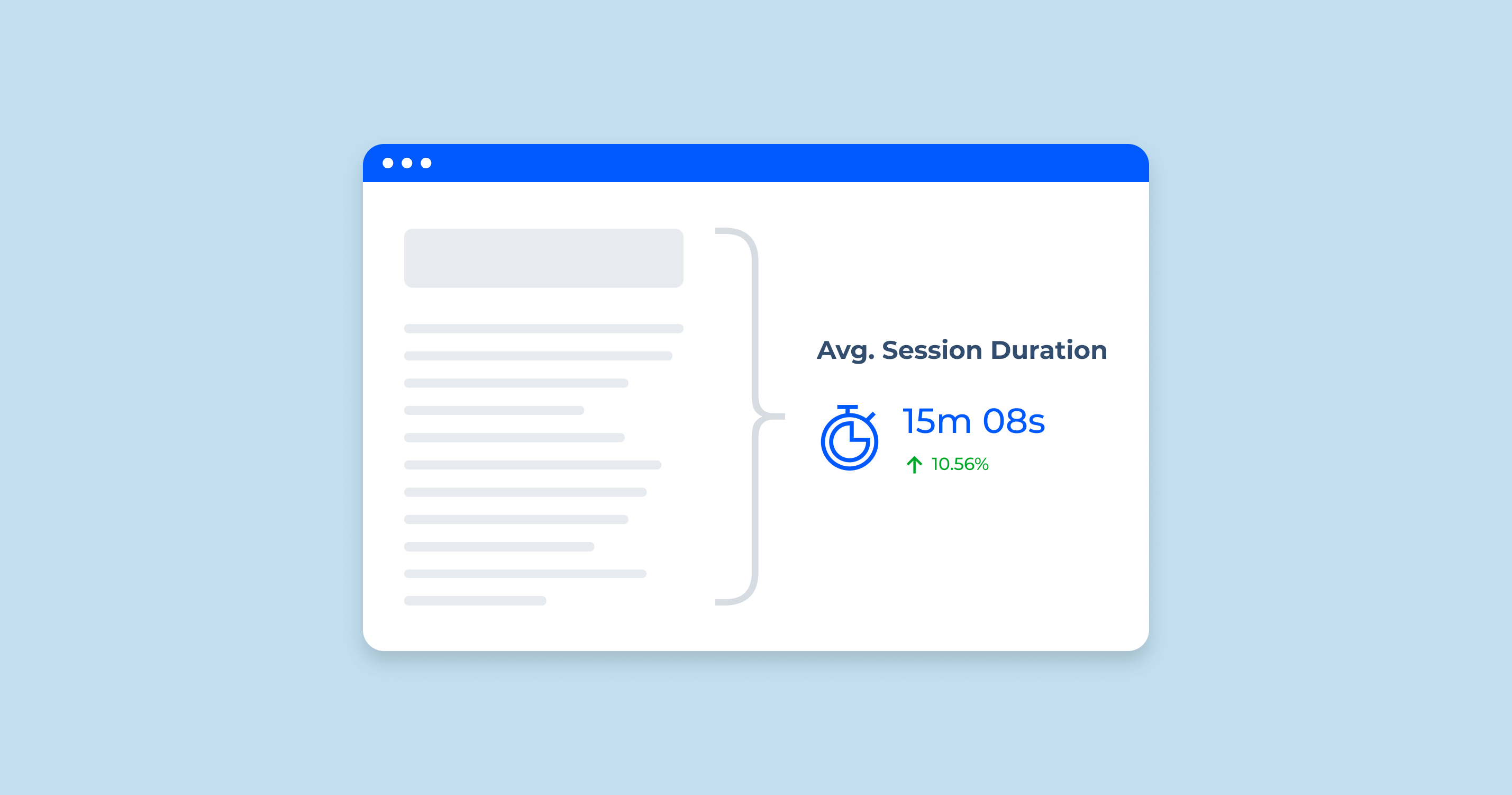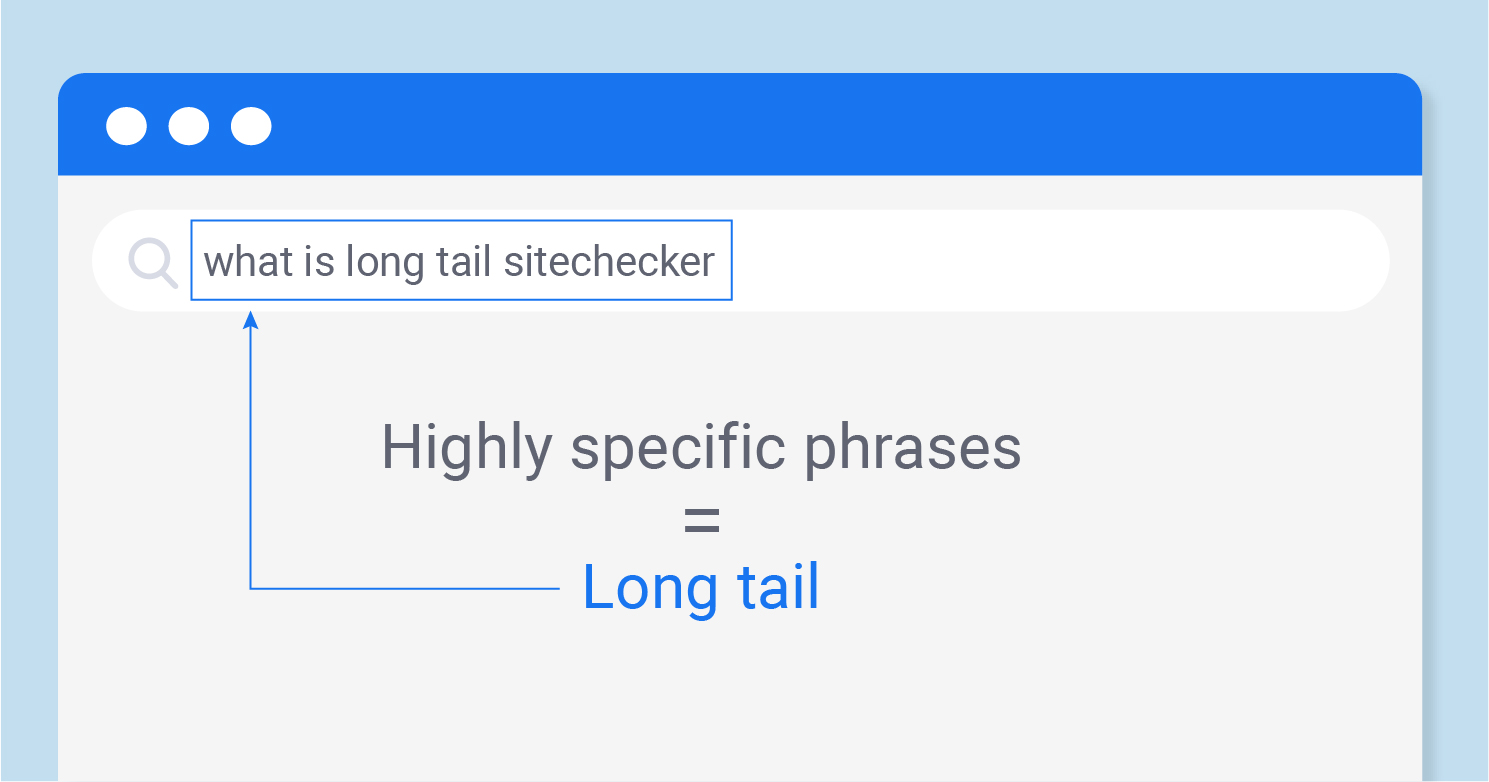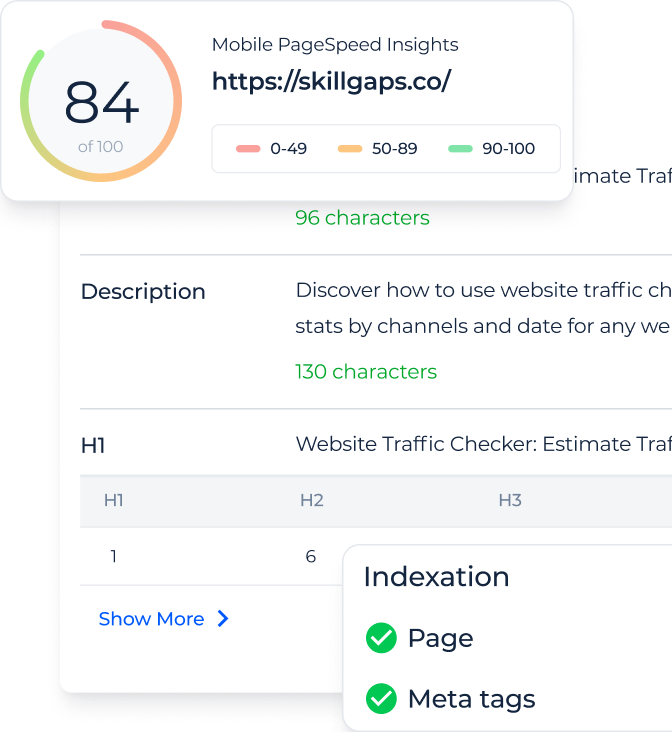You can typically find this metric in web analytics tools like Google Analytics. However, if you need to calculate it manually, the formula is quite simple:
Average Session Duration = Total Duration of all Sessions (in seconds) / Total Number of Sessions
For example, if users spent a total of 3000 seconds on your website across 50 sessions, the average session duration would be 3000/50 = 60 seconds.
Remember that ‘Total Duration of all Sessions’ refers to the sum of time spent in each individual visit. A ‘session’ typically refers to a group of interactions one visitor takes within a given timeframe on your site, like a single visit. Google Analytics, for example, defines a session as a group of user interactions within a 30-minute window.
Also, be aware that visits with only one interaction or bounce can potentially skew your average session duration data. In Google Analytics, a bounce is a session with just one interaction, and by default, these visits have a duration of 0 seconds because Google Analytics can’t calculate the time spent unless there’s a second interaction. This is a limitation you should take into account when interpreting this metric.
Here video by Root & Branch Digital Marketing about Average Session Duration Explained:
Finally, while benchmark average session duration can provide valuable insights into user engagement, it should be complemented with other metrics, like pages per session, bounce rate, and goal completion rate, to gain a more comprehensive understanding of user behavior.
Average Session Duration in Google Analytics
Average Session Duration is a key metric in Google Analytics that measures the average length of time users spend on your website during a single visit. It’s calculated by dividing the total duration of all visits (in seconds) by the total number of sessions.
To find this metric in Google Analytics, follow these steps:
- Sign in to your Google Analytics account.
- Select the website for which you’d like to see the Average Session Duration.
- On the left-hand sidebar, click on “Audience”.
- Then, in the dropdown menu, click on “Overview”.
- You’ll see the Average Session Duration listed among the key metrics in the main part of the screen.
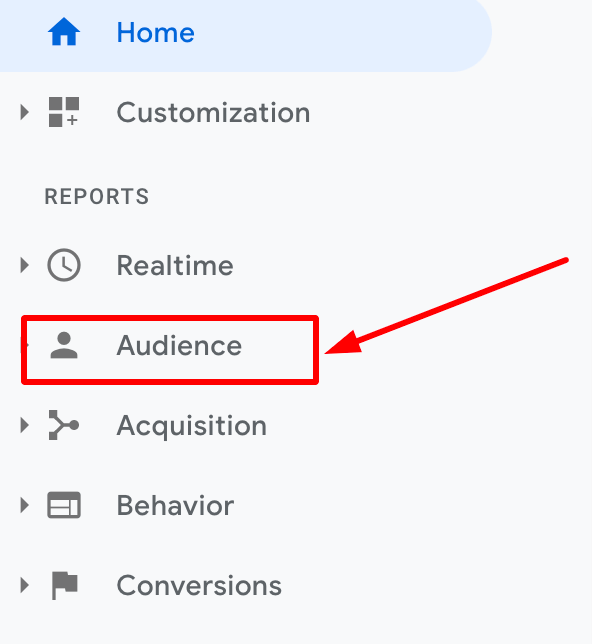
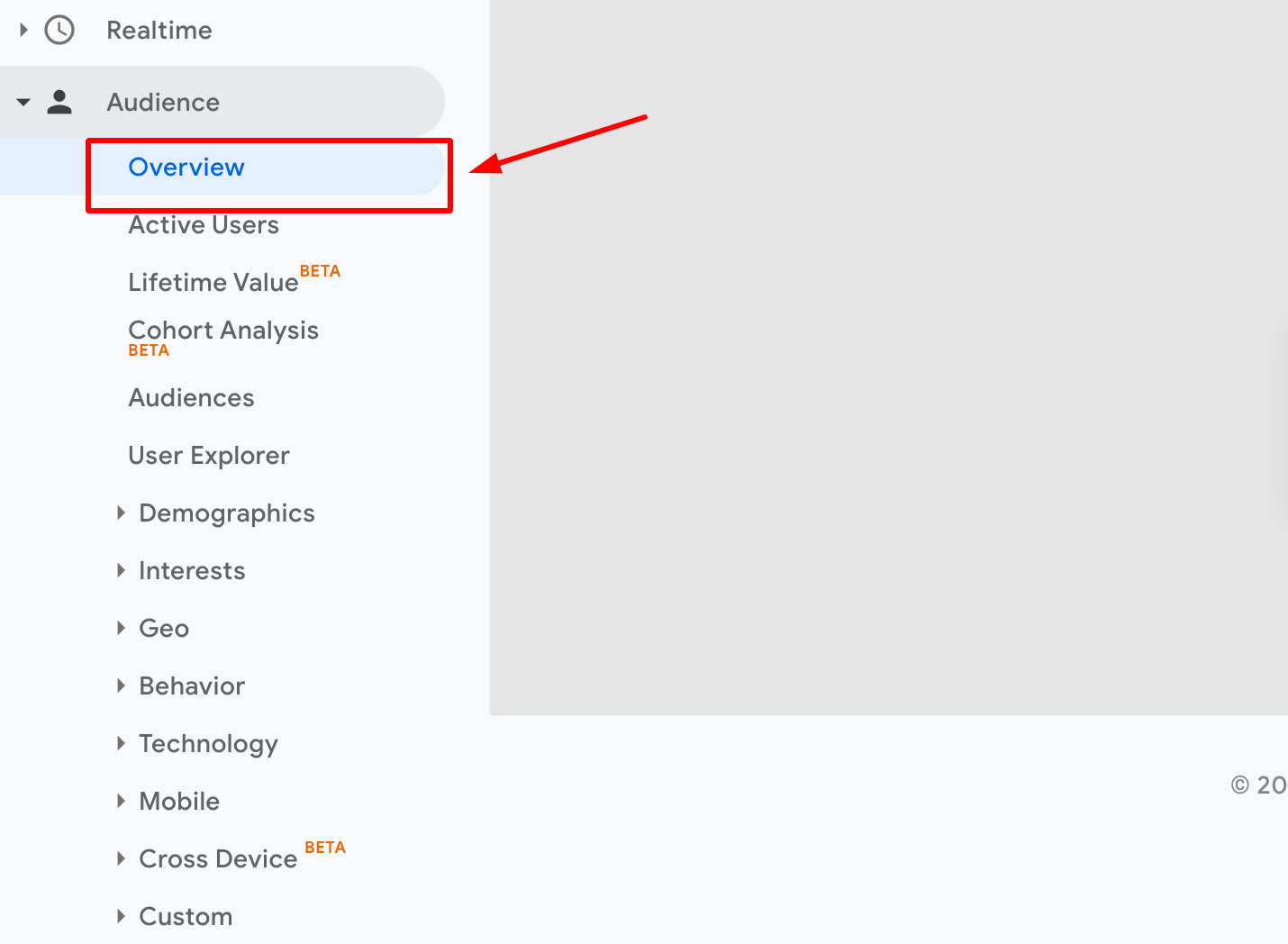
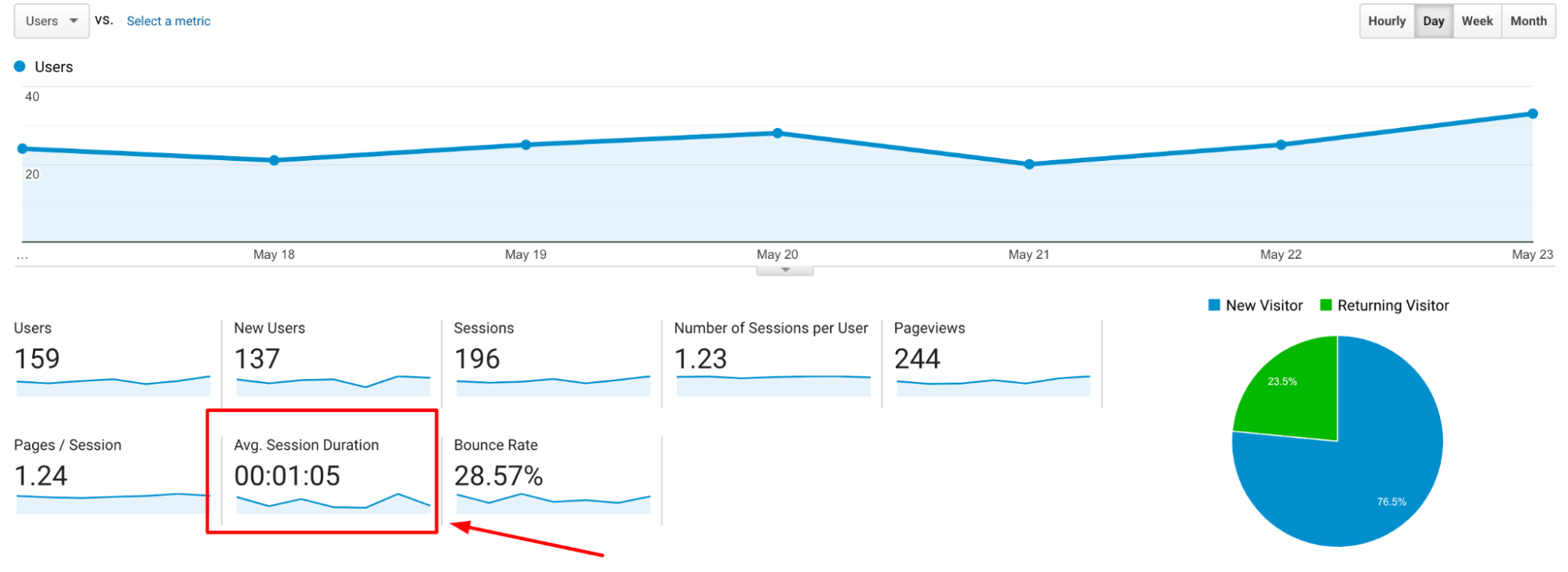
A higher Average Session Duration typically indicates that users find your content valuable and engaging. They’re spending time reading your content, browsing through your site, etc. Conversely, a lower Average Session Duration might suggest that users aren’t engaging deeply with your content or site.
However, it’s essential to be aware that visits with only one interaction or bounce sessions can potentially skew your Average Session Duration data. In Google Analytics, a bounce is a visit with just one interaction, and by default, these visits have a duration of 0 seconds because Google Analytics can’t calculate the time spent unless there’s a second interaction.
Therefore, while Average Session Duration is a helpful metric for understanding user engagement, it should be complemented with other metrics, like Bounce Rate, Pages per Session, and Goal Completion Rate, to gain a more comprehensive understanding of user behavior.
Impact Average Session Duration on SEO
Average Session Duration is indirectly related to SEO. While Google doesn’t directly use the visit duration as a ranking factor, this metric can provide insights into user behavior on your website, which can indirectly influence your SEO. Here’s how:
- User Experience. A longer average session duration usually indicates that users find your content valuable and engaging. They’re spending time reading your content, navigating through your site, etc. This kind of user behavior can indirectly impact your SEO because Google’s algorithms aim to prioritize sites that provide high-quality, relevant content to their users.
- Bounce Rate. If users leave your site shortly after landing on it (high bounce rate), this might indicate that your site doesn’t meet their needs or expectations. If your site has a high bounce rate and a low average session duration, it might be worth reviewing your content strategy. Google might interpret a high bounce rate as a signal that your site doesn’t provide relevant or quality content, which could impact your search rankings.
- Dwell Time is the length of time a visitor spends on your page before returning to the SERPs (Search Engine Results Pages). While Google hasn’t officially confirmed that dwell time is a ranking factor, many SEO professionals consider it an important metric. If users spend more time on your page (higher dwell time), Google might infer that your site provided the answer the user was looking for.
- Behavioral Signals. Google uses a variety of user behavioral signals in their ranking algorithm. These might include things like click-through rate (CTR) from the search results to your site, the time users spend on your site (session duration), and the number of pages they view per visit. All these signals can help Google determine the relevance and value of your site.
In summary, while Average Session Duration isn’t a direct ranking factor in SEO, it can provide valuable insights into user behavior.
Improving this metric — along with other engagement metrics — can lead to a better user experience, which can indirectly benefit your SEO efforts. Always focus on creating valuable, high-quality, and relevant content for your users. This will likely increase both session duration and your search engine rankings.
Best Practices to Achieve Average Session Duration
Understanding user behavior on your website is important for business success. One key metric that can provide deep insights into user engagement is average session duration.
This metric is essentially the average time a user spends on your site during a single visit. However, increasing this duration isn’t about simply keeping visitors on your website for the sake of it. It’s about enhancing user experience, providing value, and ultimately driving desirable user actions.
Here are 10 best practices to achieve that:
- Create Quality Content. The most effective way to keep users on your website longer is by providing high-quality, engaging content. Make sure your content is informative, well-researched, and offers value to your audience. Include visuals and multimedia like images, infographics, and videos to make it more engaging.
- Improve Readability. Make your content easy to read and understand. Use short sentences, bullet points, subheadings, and clear fonts. Break your content into sections with descriptive headings to make it easy to skim and understand.
- Mobile Responsiveness. Ensure your website is mobile-friendly. With the majority of web traffic coming from mobile devices, a site that’s not mobile-optimized will frustrate users and lead to shorter visit durations.
- Page Load Speed. If your website or a particular page takes too long to load, users may leave before interacting with your content. Use tools like Google PageSpeed Insights to check your website’s load time and get suggestions for improvement.
- User-Friendly Navigation. Your site should be easy to navigate. If users struggle to find the information they’re looking for, they’re likely to leave. Use a clean, intuitive design with clear menus and search functionality.
- Internal Linking. Use internal links to guide users to related content on your site. This can encourage users to explore more pages on your site, increasing the session duration.
- Use Videos. Videos can significantly increase the time users spend on your site. Create engaging, informative videos that provide value to your audience.
- Engaging CTAs. Encourage users to engage with your content through clear and enticing calls to action (CTAs). For instance, you might invite users to read related articles, sign up for a newsletter, or leave a comment.
- Live Chat/Chatbot. Consider adding a live chat or chatbot feature to provide immediate assistance to your visitors. This can engage users, answer their queries, and keep them on your site longer.
- Update Content Regularly. Regularly update your content to keep it fresh and relevant. This encourages repeat visits and can increase session duration.
Remember that improving Average Session Duration should go hand in hand with other user engagement metrics. More time spent on your website is a good thing only if it leads to desirable user actions like conversions, form submissions, or product purchases.
Website Traffic Checker for seeking website’s traffic and performance
Get data about your website visitors
Get useful traffic insights for your own website or analyze competitors' traffic and organic SERP positions
The Website Traffic Checker by Sitechecker is a paramount tool for anyone seeking insights into their website’s traffic and performance. It offers an intuitive and efficient way to understand user engagement and average session duration. This tool is a beacon for those who are looking to refine their content and user experience to cater to their audience’s preferences effectively. It’s a step towards enhancing user engagement and creating a more impactful online presence.
Conclusion
Average Session Duration is a valuable metric that provides insight into user engagement on a website. While it’s not a direct SEO ranking factor, it reflects the quality of user experience on your site. Improving this metric is about enhancing user experience, which indirectly benefits SEO. Best practices to increase it include delivering high-quality content, optimizing website navigation and load speed, ensuring mobile-friendliness, and regularly updating content.
Remember to analyze this metric alongside others like Bounce Rate and Pages per Session for a holistic view of user behavior and site performance. Ultimately, the key to improving Average Session Duration and overall site performance lies in offering a superior user experience and valuable content.
